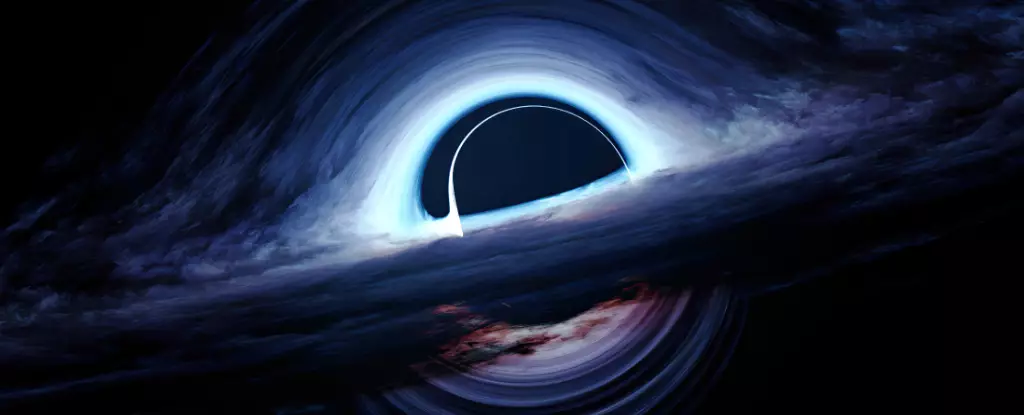Among the most enigmatic phenomena in the cosmos are supermassive black holes (SMBHs), colossal entities residing in the hearts of galaxies. Typically weighing in at millions to billions of times the mass of our Sun, these gravitational giants elicit both awe and dread. Their sheer size and the mysteries of their formation have intrigued astronomers for decades, particularly given that evidence of such black holes can be traced back to a time when the universe was merely a billion years old.
Quasars, or quasi-stellar objects, serve as a critical clue in the search for understanding supermassive black holes. These luminous sources are believed to represent rapidly growing black holes, emitting enormous energy as they consume surrounding matter. This accretion process is characterized by the release of vast amounts of radiation, which not only illuminates these distant objects but also raises questions about their growth dynamics. Despite the constraints imposed by radiation pressure, which limits the rate at which black holes can gorgle on material, early quasars suggest that black holes must have either been born exceptionally large or had some unparalleled growth spurt.
The mystery of how such massive black holes could exist so soon in cosmic history presents a significant puzzle. Traditional models of black hole formation posit several scenarios: primordial black holes created shortly after the Big Bang, stellar remnants from massive stars collapsing at the end of their life cycles, or the formation of ‘heavy seeds’ through direct collapse mechanisms. Each theory carries its own set of implications about cosmic evolution, yet none can fully account for the abundance of observed black holes.
Primordial black holes could theoretically arise in the wake of the Big Bang, yet the cosmological models suggest that only smaller, less massive versions could arise from this mechanism. An alternative path involves stellar remnants from massive stars. These black holes could theoretically grow quickly if they are birthed in environments rich in resources, such as dense star clusters where collisions and mergers are common.
An intriguing layer to the black hole formation mystery lies within the realm of dark matter. One hypothesis suggests that during the early universe, gas clouds influenced by dark matter could spontaneously collapse into black holes, bypassing the star formation stage altogether. While this theory offers a potential pathway for creating supermassive black holes, it is contingent on the existence of sufficiently large dark matter halos. The rarity of such halos in the early universe limits the viability of this model.
As researchers have delved deeper into cosmic history, modern observational technologies have provided new insights that challenge earlier assumptions about the number of black holes in the universe’s infancy. Using cutting-edge tools like the James Webb Space Telescope (JWST), astronomers have gained unprecedented access to distant galaxies, helping to refine our understanding of black hole demographics. Observations over extended time periods have unveiled fluctuations in brightness among quasar populations, indicating a richer tapestry of black holes than previously estimated.
This wealth of new data suggests that the number of supermassive black holes identified in early galaxies is significantly larger than current models predict. Specifically, new discoveries indicate that we are witnessing multiple black holes that cannot be accounted for by direct collapse alone, hinting at a more complex interplay of factors contributing to their formation.
Looking ahead, the field of black hole research is on the cusp of a revolutionary shift as numerous upcoming space missions aim to enhance our understanding of these cosmic behemoths. Initiatives such as the Euclid mission and the Nancy Grace Roman Space Telescope are poised to extend our census of quasars, mandating a comprehensive understanding of their early formation and evolution.
Nevertheless, the JWST stands out for its sophisticated imaging capabilities, which may soon allow astronomers to witness the birth of black holes in real-time, providing invaluable insight into the conditions of early cosmic environments. Such observations could offer key evidence, potentially confirming theoretical models that predict the explosive nature of black hole formation.
The quest to uncover the origins and evolution of supermassive black holes remains one of the most exhilarating and perplexing endeavors in astrophysics. As observations sharpen and advancements in technology proliferate, the enigma of these towering giants is slowly being unraveled. The next few years hold promise for transformative findings, deepening our understanding of not only black hole dynamics but of the universe itself. As we stand at the precipice of discovery, one thing remains certain: the cosmos continues to hold its secrets close, revealing them only at its own pace.

